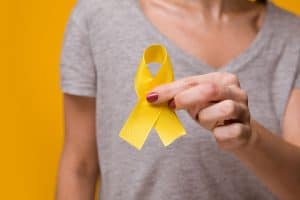Why Suicide Prevention Advocates Right Now Don’t Despair

Mental health infrastructure has come a long way since 1918-1919 influenza pandemic.
Social isolation, a key strategy to minimize the risk of spreading COVID-19 , is considered a significant risk factor for suicidality. So school closures, mandated face masks, and bans on large gatherings along with the most rapid change in the employment sector ever recorded in the U.S. have led to growing dread that suicide rates might rise.
But is an increase in the suicide rate inevitable?
Not according to Jerry Reed, Ph.D., MSW, a nationally recognized leader in the field of suicide prevention.
“I think it’s really important that we don’t write a script that reinforces despair when that is not necessarily factual,” said Reed, senior vice president for practice leadership in the Washington, D.C. office of the Education Development Center, Inc.
It’s true that calls about stress, anxiety, fear, and depression to crisis helplines and textlines have increased since the pandemic began. But Reed — who serves on the steering committee for the Mental Health & Suicide Prevention National Response to COVID-19 convened by the National Action Alliance for Suicide Prevention — says calls from people expressing suicidal thoughts are actually not increasing.
Texts about suicidal ideation to the Crisis Text Line accounted for 29 percent of conversations between January 2019 and mid-March 2020, according to data from the New York City-based non-profit that provides free 24/7 crisis counseling via text message in the U.S., U.K., Canada, and Ireland. But that figure dropped to 22 percent between March 16 and the middle of May.
The National Suicide Prevention Lifeline had not experienced significant changes in call volume as of mid-May. But a sub-network providing disaster distress emotional support experienced an 890 percent increase in call volume between April 2019 and April 2020, said a spokeswoman for Vibrant, the non-profit that administers the lifeline and other crisis intervention services around the country.
“People speak before the crisis and then get help to prevent the crisis,” Reed said. “I’m encouraged by that.”
Deaths by suicide in the U.S. appear to have increased during the 1918-19 influenza pandemic, according to a 1992 study in the journal, Suicide and Life-Threatening Behavior. But crisis and text lines, employee assistance programs and suicide prevention coordinators in every state didn’t exist back then. Even the journal devoted to suicide wasn’t established until 1971.
Who you gonna call?
Before the pandemic, the average 211 call took six to eight minutes. Now the duration extends 12 to 15 minutes, said Rachel Krausman, senior director for 211 at United Way Worldwide. In San Francisco, one of the first areas of the country to be aggressive with quarantines and shutdowns, calls took 20 to 30 minutes at the beginning of the pandemic.
Most calls to 211 are from people seeking housing or food assistance but they often overlap with mental health concerns. Approximately 10 percent to 20 percent of calls involve crisis intervention, Krausman said.
“What we’re seeing unfortunately is that a large number of people who are calling are also in some type of emotional distress,” Krausman said.
“You have a lot of people who are stuck at home who aren’t usually home alone that are now very lonely. You have a lot of people who are obviously out of work for the first time potentially ever. They are trying to seek assistance for the first time ever and that carries a great deal of anxiety.”
An increase in calls to helplines for mental health concerns could be a byproduct of fewer office visits for in-person medical care. As families put off visits to primary care clinics and emergency rooms saw fewer patients after the pandemic began, there were fewer referrals to Cambridge Health Alliance Child and Adolescent Outpatient Psychiatry, said Medical Director Nicholas Carson, M.D. The Massachusetts health system serves Cambridge, Somerville and Boston’s metro-north region.
The outpatient program was treating patients 100 percent telehealth by the beginning of April. Carson said it has also relied more on mobile clinicians from the Boston Emergency Services Team (B.E.S.T.), an initiative of the Boston Medical Center supported the Massachusetts Behavioral Health Partnership.
“For certain kids, I remain very worried,” Carson said. “I’m worried about those families that aren’t able to connect to the fairly demanding technological need of this new telehealth world that we’re living in.”
“It’s very hard to predict what’s going to happen,” Carson added. “Fortunately, suicide is a rare outcome in youth, but it’s the second leading cause of deaths.”
Some youths for whom school was a place where they struggled with learning difficulties and bullying have adapted well to remote learning and even benefited from more one-one-one tutoring delivered virtually, Carson said.
But the economic pressures on families forced to spend all their time together — especially if they already have a high burden of trauma — can spark more conflict and in extreme situations can make kids more vulnerable to hopelessness, despair and shame, leading to suicidal behaviors, Carson said.
Understanding and respecting the value of connection is important in suicide prevention, Reed said. He said people need to be mindful of opportunities to reach out to friends and neighbors, connect with talk therapy or faith-based leaders and engage in service to others.
“Coming together as a nation can be protective and that’s what we need to be focusing on right now,” Reed said.
In need of help? Please call toll-free 1-800-273-8255 or text HOME to 741741 to talk to someone who can help. There’s no charge for this service.
